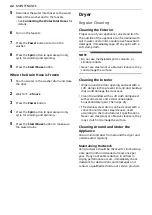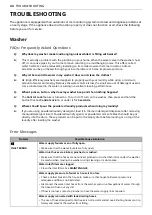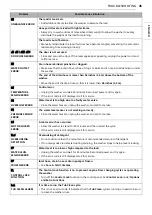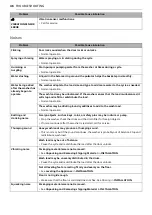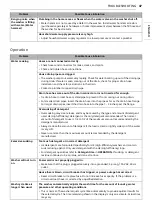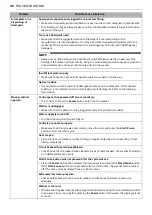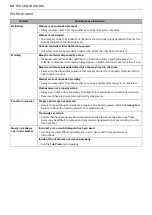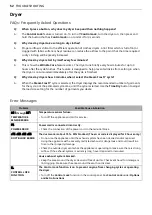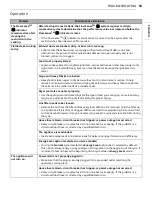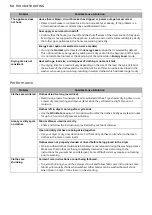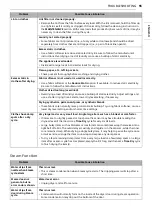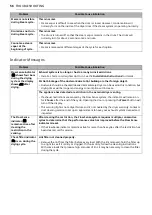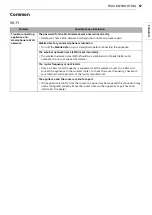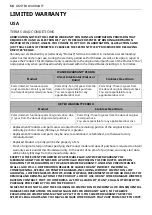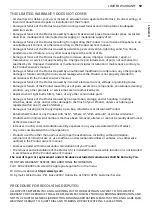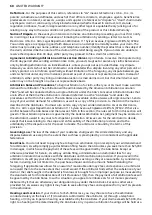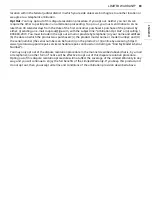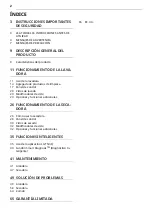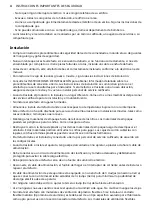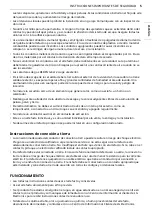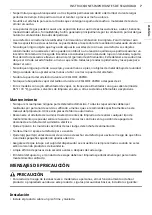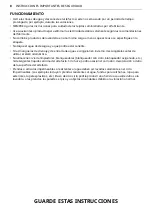
55
TROUBLESHOOTING
ENGLISH
Steam Function
Lint on clothes.
Lint filter not cleaned properly.
• Remove the lint from the filter before every load. With the lint removed, hold the filter up
to a light to see if it is dirty or clogged. If it looks dirty, follow the cleaning instructions in
the
MAINTENANCE
section. With some loads that produce high amounts of lint, it may be
necessary to clean the filter during the cycle.
Laundry not sorted properly.
• Some fabrics are lint producers (i.e., a fuzzy white cotton towel) and should be dried
separately from clothes that are lint trappers (i.e., a pair of black linen pants).
Excess static in clothes.
• Use a fabric softener to reduce static electricity. Be sure to follow the manufacturer’s
instructions. Overdrying a load of laundry can cause a buildup of static electricity.
The appliance is overloaded.
• Divide extra large loads into smaller loads for drying.
Tissue, paper, etc., left in pockets.
• Check pockets thoroughly before washing and drying clothes.
Excess static in
clothes after drying.
Fabric softener is not used or is used incorrectly.
• Use a fabric softener or the
Reduce Static
option, if available, to reduce static electricity.
Be sure to follow the manufacturer’s instructions.
Clothes dried too long (overdried).
• Overdrying a load of laundry can cause a buildup of static electricity. Adjust settings and
use a shorter drying time. Select a lower dry level setting, if necessary.
Drying synthetics, permanent press, or synthetic blends.
• These fabrics are naturally more prone to static buildup. Try using fabric softener, or use a
lower dry level setting and/or shorter time settings.
Clothes have damp
spots after a dry
cycle.
Very large load or very small load. Single large item such as a blanket or comforter.
• If items are too tightly packed or too sparse the sensor may have trouble reading the
dryness level of the load. Use a
Time Dry
cycle for very small loads.
• Large, bulky items such as blankets or comforters can sometimes wrap themselves into a
tight ball of fabric. The outside layers will dry and register on the sensors, while the inner
core remains damp. When drying a single bulky item, it may help to pause the cycle once
or twice and rearrange the item to unwrap and expose any damp areas.
• To dry a few remaining damp items from a very large load or a few damp spots on a large
item after a sensor cycle has completed, empty the lint trap, and then set a
Time Dry
cycle
to finish drying the item(s).
Problem
Possible Cause & Solution
Water drips from
nozzle when Steam
cycle starts.
This is normal.
• This is steam condensation when Steam cycle starts. The dripping water will stop after a
short time.
Steam does not
generate, but no
error code is shown.
Water level error.
• Unplug dryer and call for service.
Water drips from
door during Steam
cycle.
This is normal.
• Condensation will normally form on the inside of the dryer door during steam operation.
Some condensation may drip out the bottom of the door.
Problem
Possible Cause & Solution


